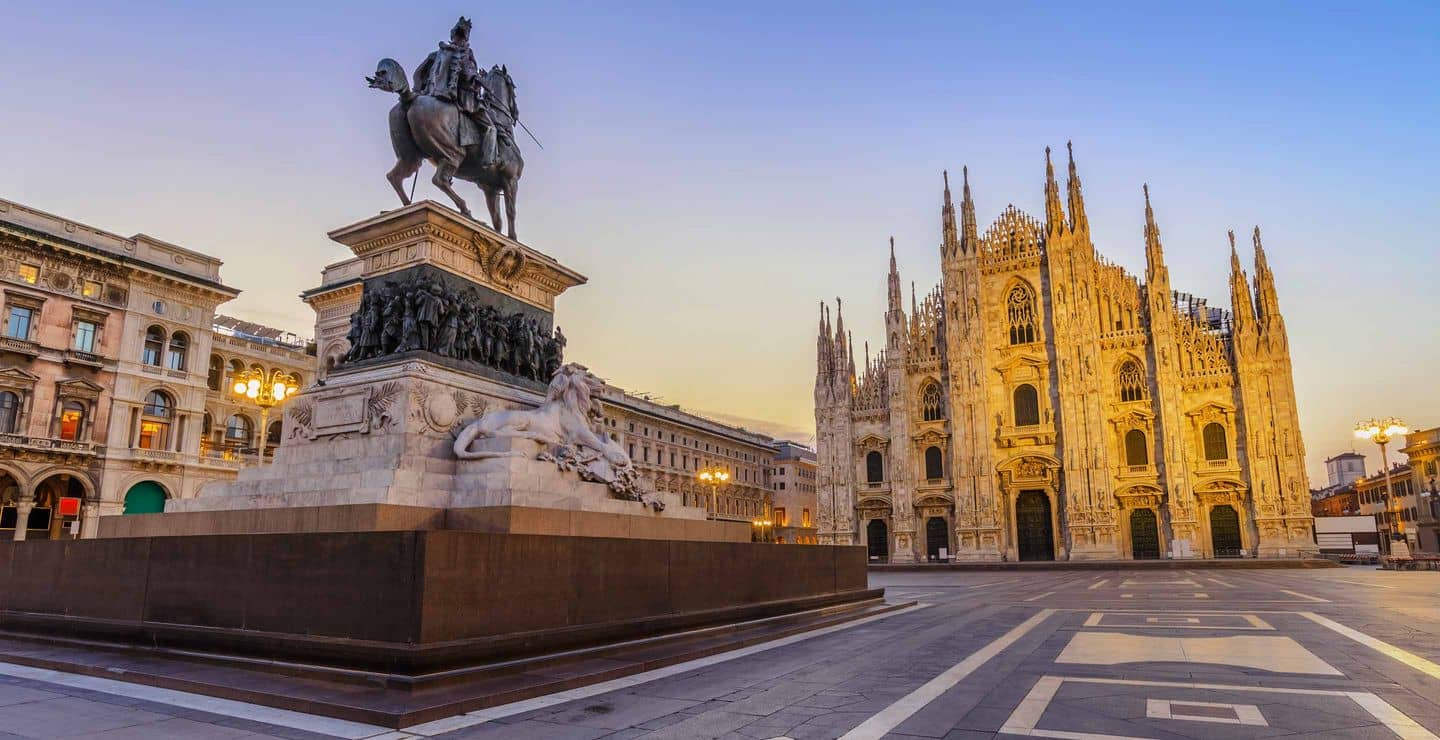Popular in Milan
Let's do this trip right
What customers say about Trainline
Read real reviews from real users
About the train journey from Gijón to Milan
Want to travel from Gijón to Milan by train? Start your journey with us.
The train from Gijón to Milan usually takes 25 hours 25 minutes on average to travel 743 miles (1196 km), although the quickest services can take as little as 25 hours 25 minutes. You can expect to find 1 train per day running on this popular route. As there aren’t any direct services running between Gijón and Milan, you’ll need to make 4 changes on your way to Milan. You can choose to travel with Renfe, SNCF or Trenitalia to get to Milan. As the main rail operators on this route, their trains offer modern comfortable seating and plenty of space for luggage as standard.
To help you get the best train deals, we'll highlight the cheapest train ticket prices from Gijón to Milan in our Journey Planner. Just remember, the sooner you book your tickets, the more you'll save!
Keep reading for more information about the train journey to Milan, including FAQs, timetables with first and last train times and tips on booking cheap train tickets. If you’re ready to book, just start a search for tickets with us today.
Gijón to Milan by train
| First train | 20:25 | |
|---|---|---|
| Last train | 20:25 | |
| Departure station | Gijón | |
| Arrival station | Milan | |
| Journey time | From 25h 25m | |
| Distance | 743 miles (1196 km) | |
| Frequency | 1 train per day | |
| Changes | 4 changes | |
| Train and bus operators | ALSA, Eurolines, BlaBlaBus, Italo, Renfe, Renfe-SNCF, SNCF, thello, Trenitalia |
FAQs about the train journey from Gijón to Milan
Want to know more about your journey from Gijón to Milan? We've compiled some of the most frequently asked questions by our customers to help you plan your journey.
Is there a direct train from Gijón to Milan?
How far is Milan from Gijón by train?
Which trains run from Gijón to Milan?
Can I get from Gijón to Milan without flying?
What is the best way to get from Gijón to Milan?
When is the first train from Gijón to Milan?
When is the last train from Gijón to Milan?
How often do trains run from Gijón to Milan?
How far in advance can I book tickets from Gijón to Milan?
Renfe, Renfe-SNCF, Italo and SNCF trains from Gijón to Milan
Renfe
Renfe-SNCF
Italo
SNCF
Renfe is the national train operator in Spain. It operates trains on the longest high-speed railway network in Europe, and the second-longest in the world. The country's major cities are linked up by the high-speed AVE and Avlo trains, while other long-distance routes are served by Altaria, Talgo, Alvia and Euromed trains. Renfe also operates cross-border services into neighbouring Portugal and France. Depending on which service you are travelling on, you'll usually find two classes on Renfe trains - Estándard (Standard Class) and Confort (First Class). Fare types range from the cheapest (but least flexible) Básico fare, to the more flexible Elige fares, to the Premium fare for seats in Confort carriages.
More information
Renfe-SNCF trains are the result of a collaboration between France and Spain to bring the two countries together via a network of high-speed trains. There are two comfort classes – Turista (or Second Class) and Preferente (or First Class). Both classes have power sockets and comfortable seating. Luggage security checks are in force at all Spanish stations before boarding. It's also advisable to travel with your identity card for border control.
More information
Italo is a high-speed train operator that runs services between many of the major cities across Italy. All Italo trains are modern, air conditioned, and have free WiFi available for all travellers. There are four comfort classes, or "ambiances", as Italo like to call them – Smart (the cheapest price), Comfort (with wider seats and extra legroom), Prima (with a welcome selection of food and drink, fast track boarding and extra space), and Executive Club (with all Prima services, extra-wide seats, access to Italo Club lounges and personal entertainment screens at your seat).
More information
SNCF is the national train operator of France. It operates all domestic trains and routes across France, as well as international services to Spain and Germany. There are three different types of domestic trains that operate under the SNCF banner – TGV (high-speed, full-service trains that connect the major cities in France), Intercités (usually a more frequent stopping service, but with all the amenities), and TER (regional train services with basic onboard facilities).
More information
Cheap train tickets from Gijón to Milan
Book in advance
Most of the train companies across Europe release their tickets around three to six months in advance, many of which can be cheaper the earlier you book. If you know the dates you want to travel, you may be able to find some cheaper train tickets from Gijón to Milan by booking early.§
Be flexible with your travel times
Many of the train services in Europe are also popular commuter services, lots of train companies increase ticket prices during “peak hours” (generally between 06:00 – 10:00 and 15:00 – 19:00 on weekdays). If you can, consider travelling outside of peak hours to find lower priced tickets.
Choose a slower or connecting train
On some of the busier routes, you might also have the option to take a slower or connecting train. It may take a little longer than some high-speed or direct services, but if you have a little extra time on your hands, you might find a cheaper fare. Plus, you'll have more time to enjoy the view of the countryside!
Look out for special deals
Take a look at our handy guides to find out when train operators release their special deals and offers to see if you can find cheap European train tickets for your journey.
For specific information about how to get your hands on cheap tickets, check out our European train tickets hub.





















